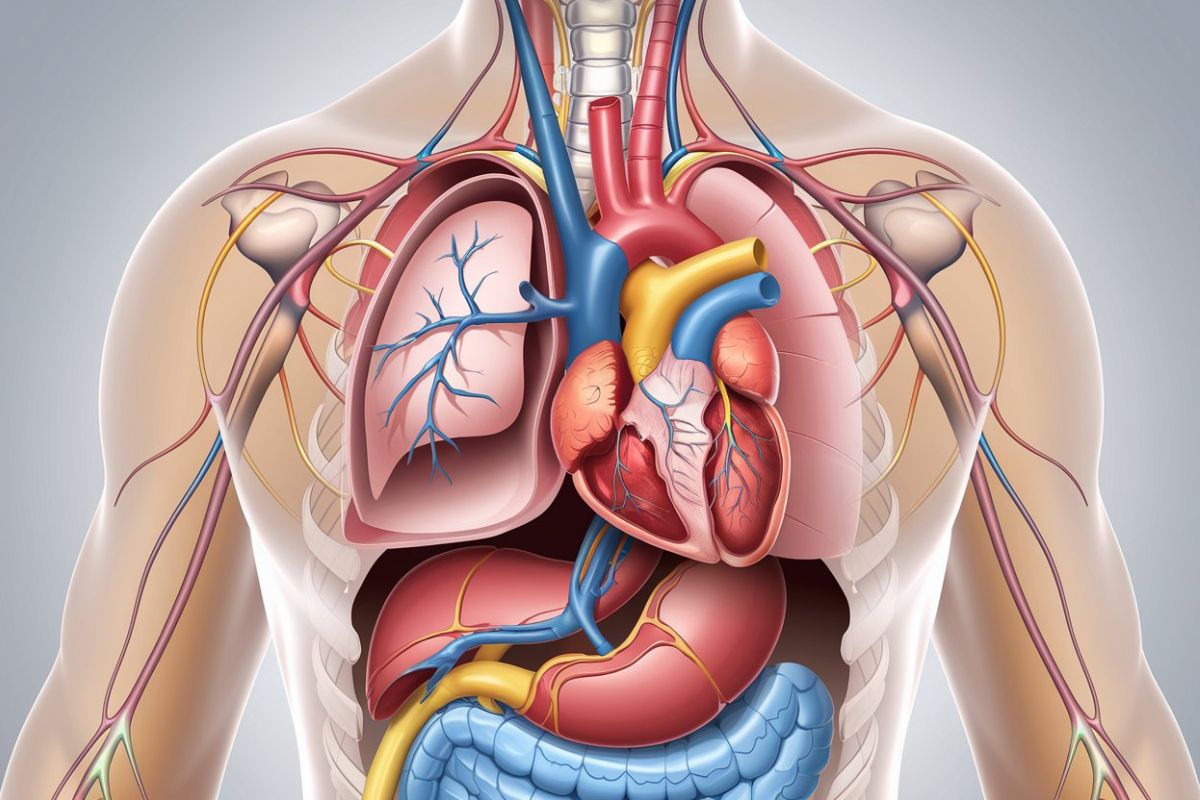
Viscero-atrial heterotaxia is a rare congenital condition where internal organs are abnormally arranged. This disorder can affect the heart, liver, lungs, and other vital organs, leading to significant health challenges. Did you know that this condition can present in various forms, such as situs inversus or situs ambiguous? In situs inversus, organs are mirrored from their normal positions, while situs ambiguous involves a more random arrangement. Understanding these variations is crucial for proper diagnosis and treatment. Many individuals with viscero-atrial heterotaxia may experience symptoms like breathing difficulties, heart defects, or digestive issues. Despite its complexity, advancements in medical science have improved management and outcomes for those affected. Let's delve into 30 intriguing facts about this unique condition to better grasp its impact and the ongoing efforts to address it.
Key Takeaways:
- Viscero-Atrial Heterotaxia is a rare condition affecting organ arrangement, often leading to heart and respiratory issues. Early diagnosis and multidisciplinary management are crucial for patients' well-being.
- Living with Viscero-Atrial Heterotaxia can bring unique challenges, including limited activities, frequent hospital visits, and the need for emotional and educational support. Ongoing research offers hope for improved treatments in the future.
What is Viscero-Atrial Heterotaxia?
Viscero-atrial heterotaxia is a rare congenital condition where internal organs are abnormally arranged. This disorder can affect the heart, lungs, liver, and other organs, leading to complex medical challenges. Here are some intriguing facts about this condition.
-
Rare Occurrence: Viscero-atrial heterotaxia affects approximately 1 in 10,000 live births, making it a rare condition.
-
Genetic Factors: Mutations in certain genes, such as ZIC3 and CFC1, are linked to this disorder.
-
Situs Ambiguus: This term describes the ambiguous positioning of organs, which is common in individuals with heterotaxia.
-
Heart Defects: Over 90% of patients with this condition have congenital heart defects, such as atrial septal defects or transposition of the great arteries.
-
Liver Position: The liver may be centrally located instead of on the right side, which is typical in healthy individuals.
Symptoms and Diagnosis
Understanding the symptoms and how doctors diagnose this condition is crucial for early intervention and management.
-
Cyanosis: A bluish tint to the skin, lips, and nails due to poor oxygenation is a common symptom.
-
Breathing Issues: Respiratory problems, including difficulty breathing and frequent lung infections, often occur.
-
Abdominal Pain: Misplaced organs can cause chronic abdominal pain and digestive issues.
-
Imaging Tests: Doctors use echocardiograms, MRIs, and CT scans to visualize the internal organ arrangement.
-
Genetic Testing: Identifying specific gene mutations helps confirm the diagnosis and guide treatment.
Treatment and Management
Managing viscero-atrial heterotaxia involves a multidisciplinary approach, including medical and surgical interventions.
-
Surgery: Corrective heart surgeries are often necessary to address congenital heart defects.
-
Medication: Medications may be prescribed to manage symptoms like heart failure or respiratory issues.
-
Regular Monitoring: Patients require lifelong monitoring to manage complications and ensure proper organ function.
-
Nutritional Support: Specialized diets and nutritional support can help manage digestive issues.
-
Physical Therapy: Physical therapy may be needed to improve respiratory function and overall health.
Impact on Daily Life
Living with viscero-atrial heterotaxia presents unique challenges that affect daily activities and quality of life.
-
Activity Limitations: Physical activities may be limited due to respiratory and cardiac issues.
-
Frequent Hospital Visits: Regular check-ups and treatments mean frequent hospital visits.
-
Emotional Support: Psychological support is essential for patients and their families to cope with the condition.
-
Educational Adjustments: Children with this condition may need special educational accommodations.
-
Social Interactions: Social interactions can be impacted due to physical limitations and frequent absences from school or work.
Research and Future Directions
Ongoing research aims to improve understanding and treatment of viscero-atrial heterotaxia.
-
Gene Therapy: Scientists are exploring gene therapy as a potential treatment to correct genetic mutations.
-
Stem Cell Research: Stem cell research holds promise for regenerating damaged tissues and organs.
-
Improved Diagnostics: Advances in imaging technology are enhancing diagnostic accuracy.
-
Personalized Medicine: Tailoring treatments based on individual genetic profiles is becoming more feasible.
-
Clinical Trials: Participation in clinical trials offers access to cutting-edge treatments and therapies.
Support and Resources
Various organizations and resources are available to support individuals and families affected by viscero-atrial heterotaxia.
-
Support Groups: Joining support groups provides emotional support and practical advice.
-
Educational Resources: Websites and books offer valuable information about the condition and its management.
-
Financial Assistance: Some organizations provide financial aid for medical expenses.
-
Advocacy: Advocacy groups work to raise awareness and promote research funding.
-
Online Communities: Online forums and social media groups connect patients and families for support and information sharing.
Final Thoughts on Viscero-Atrial Heterotaxia
Viscero-atrial heterotaxia, a rare congenital condition, affects the arrangement of internal organs. Understanding its complexities can help in managing the condition better. Early diagnosis and intervention are crucial for improving outcomes. Medical advancements have made it possible to detect and treat many of the complications associated with this condition. While it can be challenging, support from healthcare professionals and loved ones can make a significant difference. Awareness and education about viscero-atrial heterotaxia are essential for fostering a supportive environment. By staying informed and proactive, individuals and families can navigate the challenges more effectively. Remember, knowledge is power. Stay curious, stay informed, and never hesitate to seek help when needed.
Frequently Asked Questions
Was this page helpful?
Our commitment to delivering trustworthy and engaging content is at the heart of what we do. Each fact on our site is contributed by real users like you, bringing a wealth of diverse insights and information. To ensure the highest standards of accuracy and reliability, our dedicated editors meticulously review each submission. This process guarantees that the facts we share are not only fascinating but also credible. Trust in our commitment to quality and authenticity as you explore and learn with us.
